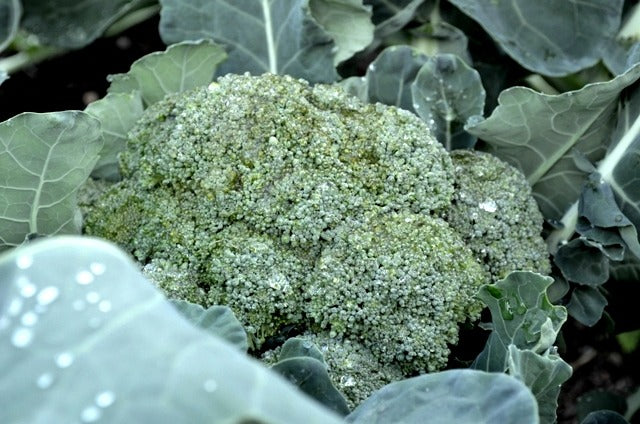North Sperrins Herb Farm
Organic Calabrese Belstar F1
Organic Calabrese Belstar F1
Couldn't load pickup availability
Calabrese: Belstar F1
Latin name Brassica oleracea
Approximately 250-350 seeds per gram
People get confused over the names calabrese and broccoli. Calabrese is a broccoli which crops in Summer. Most varieties are bred to produce one, large main head.
This versatile vegetable is extremely good for us, nutritionally.
The bit we eat is the immature flower, tightly packed green buds on a tender stem. Once the main head is cut the plant will produce some smaller side shoots.
F1 varieties crop very quickly after transplanting, in as little as 70 days.
The open pollinated type of green sprouting give many smaller heads and crop over a longer period.
Belstar F1 is a productive hybrid calabrese variety giving large tasty heads through summer and autumn. The heads mature in about 70 days from transplanting and have good mildew tolerance. Belstar F1 is principally grown for its large central head but will produce numerous smaller side-shoots after the main head is cut.
How to grow
Grow in the Brassica section of your rotation.
Sow the seeds in in the brassica seed bed in a drill about 2 cms deep. Do this between April and July. Succession plant if you have room, to get crops throughout the Summer and early Autumn. Thin the seedlings to 7 cm apart.
Transplant into their permanent position from May to August when about 10-15 cm tall. Set at a distance of 45 cms between plants.
Harvest when the central head is well formed, tight and green. Then cut the side shoots when ready.
Pests and diseases:
The seedlings can be susceptible to slug damage and older plants to damage by cabbage white butterfly caterpillars.
The best way to protect from this is to net with environmesh during the Summer.
All Brassica can suffer from cabbage root fly. The flies themselves are similar to a house fly and brown in colour. The female lays eggs
during the spring and summer near brassica plants. It is the resulting maggots that cause the damage by eating the roots and leading to severe wilting and sudden
collapse of brassica transplants. If you do have a problem with cabbage root fly in your area there is a neat organic prevention which involves putting a collar
round the seedling stem when transplanting. You can make your own using carpet underlay and reuse them or you can buy cabbage collars.
Share


